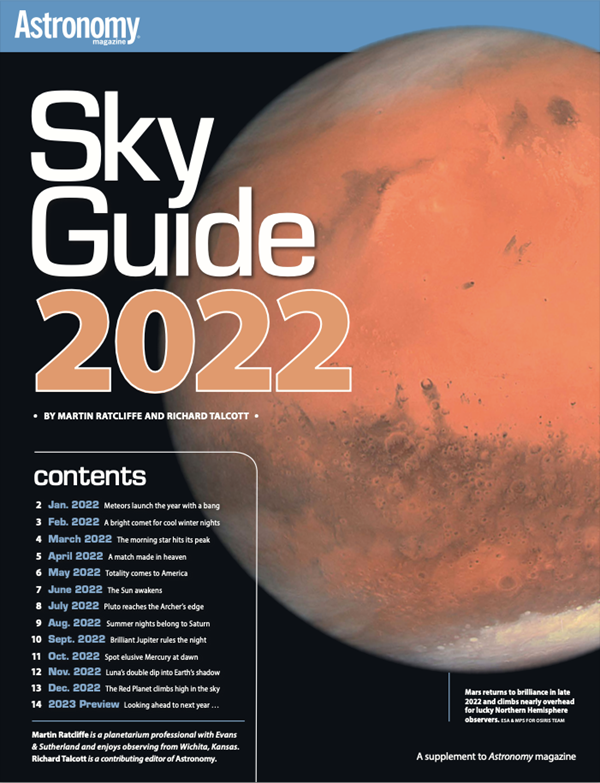The New Year gets off to a great start when a prolific meteor shower peaks just one
day after New Moon. And 2022 offers the return of a favorite comet that hasn’t visited since 2015: Comet 19P/Borrelly should reach 8th magnitude in late January and early February. By March, Venus reaches its peak at greatest elongation, appearing 11° high in the southeast an hour before sunrise and shining at magnitude –4.5. Earth’s sister planet also participates in several conjunctions this year, meeting up with Mars in February and March, then Saturn in March as well. But the best event comes April 30, when Venus passes 0.2° south of Jupiter.
Observers across North America get to witness two spectacular total eclipses of the Moon during 2022. The first occurs the night of May 15/16 and the second the morning of Nov. 8. In a coincidence of cosmic proportions, both eclipses feature 85 minutes of totality. And while lunar events are easy for everyone to watch, those seeking a challenge can track down Pluto as it reaches opposition in July and remains visible all night.
Summer nights belong to Saturn and Jupiter, which reach opposition Aug. 14 and Sept. 26, respectively. By October, Mercury is at its best for the year as a morning star. The inner world reaches its greatest elongation Oct. 8th, when it shines at magnitude –0.5. And Mars rounds out the year with great views for Northern Hemisphere observers. The Red Planet is at opposition Dec. 7/8, spanning an impressive 17″ through a telescope. At magnitude –1.9, it outshines all the other nighttime stars and planets except for Jupiter.










